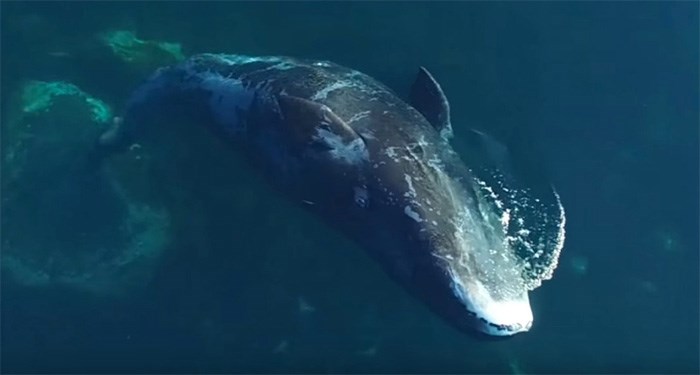 A UBC doctoral studentâs drone footage of bowhead whales helps explain why they travel to Nunavut every year. Photograph By Sarah Fortune/YouTube
A UBC doctoral studentâs drone footage of bowhead whales helps explain why they travel to Nunavut every year. Photograph By Sarah Fortune/YouTube
Itâs not just humans who feel the need to occasionally exfoliate.
A PhD student at the University of British Columbia has found that bowhead whales do, too.
For generations, there have been âincidental observationsâ of the whales returning every year to Cumberland Sound in Nunavut.
Sarah Fortune, a doctoral student at UBCâs Institute for the Oceans and Fisheries, used drone video footage to find out why.
The stunningly beautiful video shows the whales rubbing against submerged rocks to remove dead skin thatâs a result of moulting.
Fortune was watching the whalesâ behaviour from a boat. She was with colleagues, including William Koski, a whale biologist with LGL Limited, and local Inuit hunters and fishers from Pangnitung.
From their vantage point, they could see the whales turn on their sides and wave their flippers and tails in the air. They realized the whales were not there to just feed. It was when they sent a drone into the sky above them that they were able to watch the whales rub against the rocks.
âWe now know that Cumberland Sound serves as a habitat for feeding and moulting,â Fortune says in a UBC press release. âVery little is known about moulting in any of the large whale species.â
Orcas have been observed rubbing themselves on rocks and pebbly beaches in the Strait of Georgia.
Fortune is continuing to study the behaviour of bowhead whales, the longest-living marine mammals on the planet. They can live up to 200 years. Scientists do not yet know, however, how they will adapt to warming ocean temperatures and the resulting changing environments.


